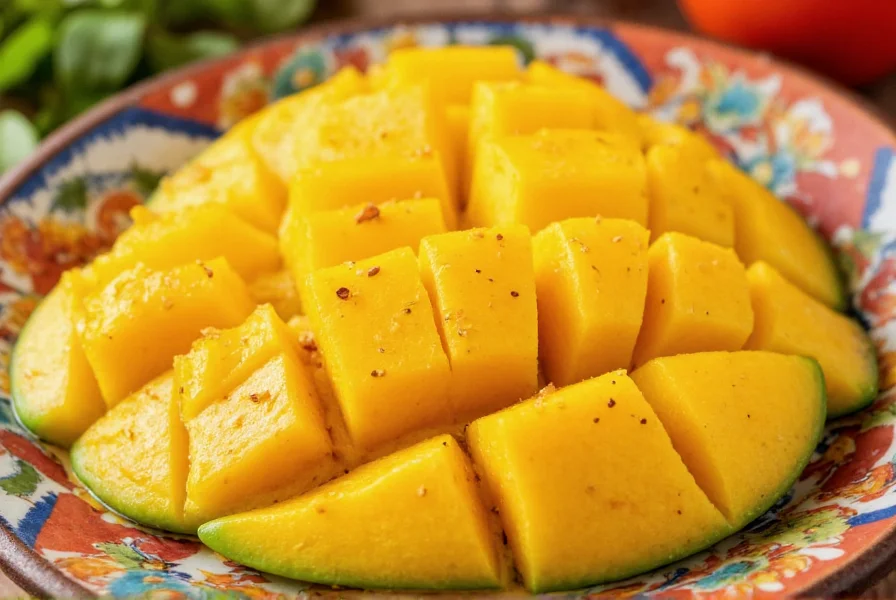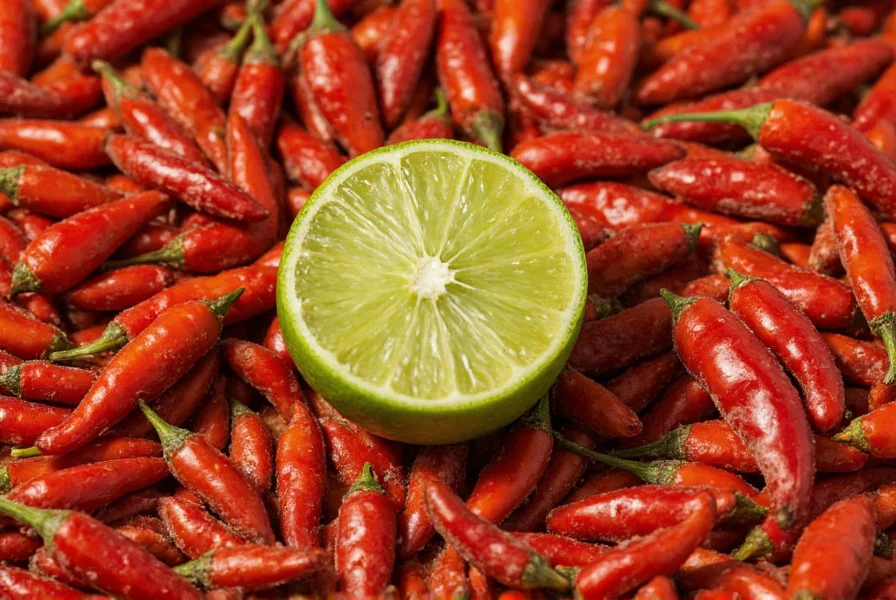For food enthusiasts seeking to understand this popular flavor profile, chili lime represents one of the most versatile seasoning combinations in modern cooking. Unlike single-ingredient spices, this dynamic duo creates a complex sensory experience that elevates ordinary dishes to extraordinary levels. The magic happens through the interplay of capsaicin from chilies stimulating heat receptors while citric acid from lime brightens the palate, creating what food scientists call flavor layering.
The Science Behind the Perfect Balance
Understanding why chili and lime work so well together requires examining basic food chemistry. Capsaicin, the compound responsible for chili heat, binds to TRPV1 receptors in our mouths. Lime's citric acid doesn't neutralize this heat but rather provides a contrasting sensation that makes the heat more manageable and enjoyable. This complementary relationship follows the culinary principle of contrast and balance—where opposing elements create harmony.
When properly formulated, a quality chili lime blend maintains a 3:2 ratio of chili to lime components. Too much lime overwhelms the subtle chili notes, while excessive chili dominates the delicate citrus. The addition of salt serves multiple purposes: it enhances both flavors through flavor potentiation, preserves the mixture, and provides necessary sodium that our bodies naturally crave.
Breaking Down Authentic Components
Not all chili lime seasonings are created equal. The most authentic versions feature specific ingredients that contribute to their distinctive character:
| Component | Quality Indicators | Common Substitutes |
|---|---|---|
| Chili Element | Dried whole chilies (ancho, guajillo, arbol) ground fresh | Cayenne powder (less complex flavor) |
| Lime Element | Fresh lime zest or high-quality dehydrated lime | Citric acid (artificial, lacks depth) |
| Salt Base | Sea salt or Himalayan pink salt | Table salt with anti-caking agents |
| Additional Elements | Garlic powder, cumin, oregano (in moderation) | Sugar, MSG, artificial flavors |
When evaluating commercial chili lime seasoning products, check for these markers of quality. Premium blends avoid fillers like maltodextrin and artificial colors, focusing instead on pure, pronounceable ingredients. The color should be a rich reddish-brown from quality chilies, not an unnaturally bright orange.
Cultural Roots and Global Journey
While often associated with contemporary snack culture, chili lime's origins trace back centuries to Mesoamerican culinary traditions. Indigenous peoples in Mexico combined wild chilies with tart fruits like lima// (a native citrus) long before European contact. Spanish colonizers later introduced sea salt, completing the triumvirate that defines modern chili lime.
The flavor combination gained global popularity through Mexican street food culture, particularly frutas con chile—fresh fruit sprinkled with chili lime seasoning. This tradition transformed humble ingredients into a beloved treat that crossed borders with Mexican migration. Today, you'll find authentic chili lime fruit pairings from Los Angeles to Tokyo, each adapting to local tastes while maintaining the essential flavor profile.

Creating Your Perfect Homemade Blend
For those seeking the ultimate homemade chili lime powder, nothing beats crafting your own blend. Here's a professional chef's approach:
- Toast dried chilies (2 ancho, 1 guajillo) in a dry skillet until fragrant but not burnt
- Grind to fine powder using a dedicated spice grinder
- Mix with fresh lime zest from 2 organic limes (avoid pre-grated)
- Add 2 tablespoons sea salt and optional 1 teaspoon garlic powder
- Store in airtight container away from light and moisture
This authentic chili lime recipe yields approximately 1/4 cup of seasoning. For a wet version, combine 2 tablespoons of the dry blend with 1 tablespoon fresh lime juice and 1 tablespoon olive oil to create a versatile marinade. The homemade version typically lasts 2-3 months when properly stored, significantly longer than commercial products containing fresh ingredients.
Mastering Flavor Pairings
Understanding what foods go with chili lime separates casual users from true connoisseurs. While the classic pairing with fresh fruit remains popular, this seasoning shines across diverse applications:
- Proteins: Rub on chicken thighs before grilling, mix into shrimp ceviche, or sprinkle on roasted salmon
- Vegetables: Toss with roasted sweet potatoes, sprinkle on grilled corn, or mix into roasted cauliflower
- Snacks: Elevate popcorn, rim margarita glasses, or season roasted nuts
- Fruit: Transform watermelon, pineapple, mango, or even apples with a light dusting
- Drinks: Add to bloody marys, rim agua fresca glasses, or mix into fruit smoothies
The key to successful pairings lies in balancing the seasoning's intensity with the food's natural characteristics. Delicate items like white fish or mild fruits require a light touch, while robust ingredients like sweet potatoes or grilled meats can handle more generous applications. For those exploring chili lime nutritional benefits, note that the vitamin C from lime enhances absorption of capsaicin's metabolism-boosting properties.

Avoiding Common Pitfalls
Even experienced cooks make mistakes with chili lime seasoning. The most frequent errors include:
- Over-application: Start with 1/4 teaspoon per serving and adjust upward
- Poor storage: Exposure to humidity causes clumping and flavor degradation
- Using low-quality ingredients: Artificial lime flavor lacks the complexity of real lime
- Applying to incompatible foods: Avoid pairing with strongly sweetened items that create flavor conflict
- Adding too early in cooking: Lime elements can become bitter when exposed to prolonged heat
When incorporating chili lime into cooked dishes, add the lime component during the final stages of preparation to preserve its bright flavor. For dry rubs, apply the complete blend before cooking, allowing the heat to mellow the chili while the salt penetrates the food.
Commercial Products Worth Considering
For those without time to make their own, several quality chili lime seasoning brands deliver authentic flavor. Look for products listing chili, lime, and salt as the first three ingredients without artificial additives. Some specialty brands now offer regional variations like Oaxacan-style (with hoja santa) or Yucatecan-style (with achiote). When comparing options, check for production dates—freshness dramatically impacts flavor quality in spice blends.
What's the difference between chili lime and Tajín?
Tajín is a specific brand of chili lime seasoning that popularized the flavor combination globally. While 'chili lime' refers to the general flavor profile, Tajín contains specific proportions of chilies, lime, and salt plus minor ingredients like potassium bitartrate. Many regional variations exist beyond the Tajín formula, with some emphasizing particular chili varieties or adding complementary spices like cumin.
Can I make chili lime seasoning without salt?
Yes, you can create a salt-free version by increasing the chili and lime components proportionally. However, salt plays a crucial role in flavor enhancement and preservation. For a balanced salt-free alternative, consider adding a small amount of nutritional yeast for umami depth or a touch of honey to balance the heat, though these will alter the traditional profile slightly.
Does chili lime seasoning have health benefits?
Chili lime seasoning offers several potential health benefits when consumed as part of a balanced diet. Capsaicin from chilies may boost metabolism and provide anti-inflammatory effects, while lime contributes vitamin C. The combination may enhance nutrient absorption, particularly of fat-soluble vitamins. However, benefits depend on the specific formulation and consumption quantity—commercial versions with added sugar or artificial ingredients diminish potential advantages.
How long does homemade chili lime seasoning last?
Properly stored in an airtight container away from light and moisture, homemade chili lime seasoning maintains peak flavor for 2-3 months. The lime component typically degrades first, losing its bright citrus notes. Commercial products often contain preservatives that extend shelf life to 6-12 months. Always check for changes in color, aroma, or taste as indicators of degradation—fresh chili lime should have a vibrant reddish color and zesty aroma.
What fruits work best with chili lime seasoning?
The best fruits for chili lime pairing balance sweetness with acidity. Watermelon, mango, pineapple, and jicama offer ideal canvases for this seasoning. Melons and stone fruits work well in summer, while apples and pears provide excellent fall pairings. Avoid highly acidic fruits like citrus or extremely delicate berries, which don't complement the seasoning's profile as effectively. For optimal results, chill the fruit first, then apply seasoning just before serving.
Frequently Asked Questions
What's the difference between chili lime and Tajín?
Tajín is a specific brand of chili lime seasoning that popularized the flavor combination globally. While 'chili lime' refers to the general flavor profile, Tajín contains specific proportions of chilies, lime, and salt plus minor ingredients like potassium bitartrate. Many regional variations exist beyond the Tajín formula, with some emphasizing particular chili varieties or adding complementary spices like cumin.
Can I make chili lime seasoning without salt?
Yes, you can create a salt-free version by increasing the chili and lime components proportionally. However, salt plays a crucial role in flavor enhancement and preservation. For a balanced salt-free alternative, consider adding a small amount of nutritional yeast for umami depth or a touch of honey to balance the heat, though these will alter the traditional profile slightly.
Does chili lime seasoning have health benefits?
Chili lime seasoning offers several potential health benefits when consumed as part of a balanced diet. Capsaicin from chilies may boost metabolism and provide anti-inflammatory effects, while lime contributes vitamin C. The combination may enhance nutrient absorption, particularly of fat-soluble vitamins. However, benefits depend on the specific formulation and consumption quantity—commercial versions with added sugar or artificial ingredients diminish potential advantages.
How long does homemade chili lime seasoning last?
Properly stored in an airtight container away from light and moisture, homemade chili lime seasoning maintains peak flavor for 2-3 months. The lime component typically degrades first, losing its bright citrus notes. Commercial products often contain preservatives that extend shelf life to 6-12 months. Always check for changes in color, aroma, or taste as indicators of degradation—fresh chili lime should have a vibrant reddish color and zesty aroma.
What fruits work best with chili lime seasoning?
The best fruits for chili lime pairing balance sweetness with acidity. Watermelon, mango, pineapple, and jicama offer ideal canvases for this seasoning. Melons and stone fruits work well in summer, while apples and pears provide excellent fall pairings. Avoid highly acidic fruits like citrus or extremely delicate berries, which don't complement the seasoning's profile as effectively. For optimal results, chill the fruit first, then apply seasoning just before serving.











 浙公网安备
33010002000092号
浙公网安备
33010002000092号 浙B2-20120091-4
浙B2-20120091-4